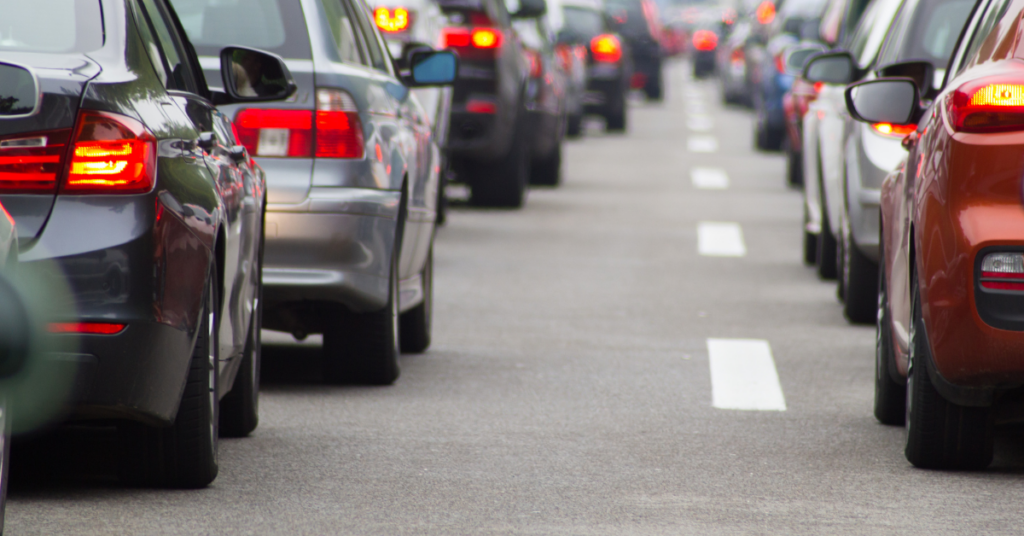Columbia's traffic patterns can present significant challenges for drivers. The frequency of car accidents in the area has raised concerns among residents and local authorities alike. For those affected, consulting Columbia car accident lawyers can be a crucial step toward seeking justice and compensation. This blog post delves into the underlying traffic patterns that contribute to these incidents, highlighting high-risk intersections, common causes, demographic factors, and more.
High-Risk Intersections in Columbia and Surrounding Areas
High-risk intersections in Columbia are significant contributors to traffic accidents. Notable areas include the intersection of Broad River Road and I-20, where heavy traffic and unclear signage create frequent hazards. Another hotspot is the intersection of Two Notch Road and Trenholm Road, notorious for its high accident rate due to poor visibility and congested lanes. Downtown Columbia also sees numerous accidents, particularly near the South Carolina State House. The mix of locals, tourists, and government employees converging in this area often leads to confusion and collisions. The intersection of Huger Street and Gervais Street is another critical point, plagued by heavy traffic and complicated traffic light sequences that leave drivers vulnerable to crashes. In the surrounding areas, intersections like Clemson Road and Sparkleberry Lane experience a high volume of accidents, especially during rush hours when traffic is at its peak. These intersections are often the sites of rear-end collisions and side-impact crashes, driven by the fast-paced and impatient nature of rush-hour traffic. Efforts to improve safety at these intersections, such as better signage, clearer lane markings, and enhanced traffic signal systems, are ongoing but have yet to significantly reduce the frequency of accidents. As Columbia continues to grow, addressing these high-risk areas will be crucial for improving overall traffic safety in the city.
Common Causes of Traffic Accidents in Columbia
Columbia's car accidents are often attributed to several prevalent causes. Distracted driving ranks high on the list, with many drivers engaging in activities such as texting, navigating GPS systems, or even browsing social media while behind the wheel. Speeding is another significant factor, especially on roads where speed limits fluctuate, creating confusion and temptation to drive faster than is safe. Driving under the influence of alcohol or drugs continues to be a serious issue. Despite ongoing public awareness campaigns and stricter law enforcement, some individuals still choose to drive while impaired, leading to catastrophic consequences. Weather conditions also play a crucial role; heavy rain and fog frequently reduce visibility and make roads slippery, heightening the risk of accidents. Aggressive driving behaviors, such as tailgating, frequent lane changes, and road rage incidents, contribute further to the problem. Additionally, failure to adhere to traffic signals and stop signs, often due to impatience or lack of attention, results in numerous collisions. Finally, inexperienced drivers, particularly teenagers and young adults, are more prone to making errors that lead to accidents, underscoring the need for more comprehensive driver education programs in the area.
Impact of Demographic Factors on Car Accidents
Younger drivers, especially those between 16 and 24, are notably more prone to accidents, largely due to inexperience and a tendency toward risk-taking behaviors. The influx of college students in Columbia, many of whom may be unfamiliar with local roads and traffic rules, exacerbates this issue. Additionally, older drivers may face challenges such as diminished reaction times and visual impairments, which can also contribute to accidents. Socioeconomic factors play a crucial role as well. Lower-income areas often have higher rates of uninsured drivers and less access to comprehensive driver education programs. This lack of resources can increase the likelihood of accidents, as drivers may not be adequately prepared to handle complex driving scenarios. Conversely, more affluent neighborhoods usually benefit from better infrastructure and resources, which can result in safer driving conditions. Cultural attitudes toward driving can also influence accident rates. For example, areas with a high number of immigrants may have drivers who are accustomed to different traffic norms and regulations, leading to confusion and errors on the road. Similarly, neighborhoods with a high prevalence of gig economy workers, such as rideshare drivers, can experience increased traffic and a higher incidence of accidents due to the pressures of meeting tight schedules and navigating unfamiliar areas.
The Role of Road Infrastructure and Urban Planning
The design and maintenance of Columbia’s roads significantly influence traffic safety. Many roads lack adequate signage, which can confuse drivers and lead to errors. Some intersections are poorly designed, making it difficult for drivers to navigate safely. The rapid growth of the city has not been matched by timely infrastructure improvements, leading to congestion and a higher incidence of accidents. Urban planning decisions also play a critical role in traffic patterns. Mixed-use developments can attract higher traffic volumes, but without proper road design and management, these areas can become accident hotspots. For instance, areas with dense pedestrian activity need clearly marked crosswalks and sufficient traffic signals to ensure safety for both drivers and pedestrians. Moreover, the lack of designated bike lanes forces cyclists to share the road with vehicles, increasing the risk of collisions. Poorly lit streets and inadequate drainage systems can further exacerbate dangerous driving conditions, particularly during adverse weather. In some neighborhoods, narrow roads and limited parking options contribute to frequent minor accidents and fender-benders. The challenge lies in updating the existing infrastructure to meet the demands of a growing population while incorporating modern urban planning principles that prioritize safety.
Seasonal Variations in Traffic Accidents
Seasonal changes have a notable impact on traffic accident rates in Columbia. During the summer, the influx of tourists increases road congestion, raising the likelihood of accidents. Similarly, holiday seasons such as Thanksgiving and Christmas lead to higher travel volumes as people visit family and friends, resulting in a spike in collisions. Winter months, although milder compared to other regions, still present unique challenges. Occasional icy patches and heavy rains can create slippery conditions, making roads treacherous. Drivers unaccustomed to these conditions may struggle to adjust their driving habits appropriately, leading to an increase in accidents. Spring and fall also have their own sets of issues. Springtime can bring heavy rainfall, which affects visibility and road traction, while the fall season often sees an increase in deer activity, posing additional hazards for drivers. Seasonal variations not only affect the volume of traffic but also the type of accidents that occur, making it essential for drivers to stay vigilant and adapt to changing conditions throughout the year.
Strategies for Reducing Traffic Accidents in Columbia
Addressing the issue of car accidents in Columbia requires a multi-faceted approach. Public awareness campaigns focusing on the dangers of distracted driving, speeding, and driving under the influence can play a crucial role in educating the public. These campaigns should be reinforced with stricter law enforcement at high-risk intersections to deter reckless behavior and ensure compliance with traffic regulations. Improving road infrastructure is equally essential. The city can enhance safety by installing better signage, implementing clearer lane markings, and adding more traffic signals or roundabouts to manage heavy traffic. Investing in smart traffic management systems can help regulate traffic flow and reduce congestion, particularly during peak hours. Community engagement is another key strategy. Organizing workshops and driver education programs, especially targeting younger and inexperienced drivers, can foster safer driving habits. Collaborating with local schools and universities to incorporate comprehensive driver education into their curricula could also make a significant difference. In addition, promoting alternative transportation options such as public transit, biking, and walking can reduce the number of vehicles on the road, thereby decreasing the likelihood of accidents. Implementing dedicated bike lanes and improving pedestrian infrastructure can make these modes of transportation safer and more appealing. Finally, leveraging technology, such as apps that provide real-time traffic updates and warnings, can help drivers make informed decisions and avoid accident-prone areas. Encouraging the use of advanced driver-assistance systems (ADAS) in vehicles can further enhance road safety by providing features like collision warnings and lane-keeping assistance.
Work With Christmas Injury Lawyers if You Are Injured in a Car Accident
Dealing with the aftermath of a car accident can be overwhelming. Medical bills, lost wages, and the emotional toll can add significant stress to an already challenging situation. Christmas Injury Lawyers specialize in handling car accident cases in Columbia and are well-versed in the local traffic patterns and accident hotspots that may have contributed to your incident. Their experienced team is dedicated to investigating every detail of your case to build a strong claim on your behalf. Whether negotiating with insurance companies or representing you in court, Christmas Injury Lawyers work tirelessly to secure the best possible outcome for you. By partnering with them, you gain access to invaluable legal expertise and a compassionate approach focused on your recovery and well-being. Don’t navigate this difficult journey alone—reach out to Christmas Injury Lawyers for the support and advocacy you need.


